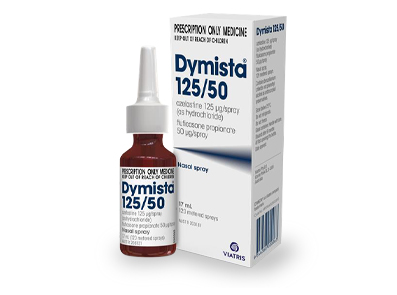Neurology
Introduction and Heritage
Viatris has a presence in multiple neurological conditions with a recognised unmet medical need, such as: epilepsy, neuropathic pain (NeP), and migraine.
About Epilepsy
Epilepsy is one of the most common neurological diseases globally1. It was recognised in 45.9 million people in 2016 and over 126,000 deaths attributed to the condition2.
Nearly 80% of people with epilepsy live in low-and-middle-income countries. Three-quarters don't get treatment as needed and up to 70% of people with epilepsy could live seizure-free if properly diagnosed and treated.
About Neuropathic Pain (NeP)
Neuropathic pain is caused by a lesion or disease of the somatosensory system, including peripheral fibres (Aβ, Aδ and C fibres) and central neurons. Multiple causes of neuropathic pain have been described and 3 its incidence and prevalence is likely to increase owing to the ageing global population and the rise in specific risk factors, including diabetes4.
NeP places a considerable burden on patients and society with:5-9
- Substantial impairment in function and quality of life
- Disability
- Work impairment
- Increased healthcare utilization
![]()
A. About Painful Diabetic Neuropathic Pain (DPN):
Painful DPN is a common, debilitating complication of diabetes that significantly impacts patients' lives.12
Painful diabetic neuropathic pain is characterized by nerve damage, and is also commonly accompanied by oxidative stress, inflammation and mitochondrial dysfunction.13
- Neuropathy is one of the most prevalent long-term complications of diabetes 14 about 50% of all patients with diabetes develop DPN.15,16
- Painful DPN is one of the most common forms of neuropathic pain, affecting 20% to 24% of the diabetic population.17
- Pain associated with DPN substantially impacts many aspects of patients' lives, including physical and emotional functioning, walking ability, sleep, anxiety symptoms, and enjoyment of life.12
- The total number of people with diabetes is projected to rise from 171 million in 2000 to 366 million in 2030.18 Peripheral neuropathy affects 30-50% of patients with diabetes.19
B. Chronic Low Back Pain with an identified Neuropathic Component
Chronic low back pain is the second most common reason for visits to the physician in the United States.20 Approximately 20% of individuals between ages 20-59 experience chronic low back pain.21
Back pain can be a combination of both nociceptive and neuropathic components (mixed pain).22
- 37% of cases of chronic low back pain have a neuropathic component.23
- NSAIDs are appropriate to address the nociceptive component only.24
- Low back pain with leg pain is strongly associated with reduced health-related quality of life and function.25
![]()
About Migraine
Migraine is currently listed as being in the top 10 most disabling disorders worldwide in terms of disability adjusted life years.26
Migraine is the most prevalent condition affecting over 1.04 billion people in 2016 worldwide with an estimated 45.1 million years lived with disability (YLD) for the same time period.26
Women are roughly 3x more likely to experience migraine compared with men.27
References:
- WHO Fact Sheet on Epilepsy (2019) https://www.who.int/news-room/fact-sheets/detail/epilepsy ; 2.GDB 2016 Epilepsy Collaborators: Lancet Neurology 2019: 18: 357-375; 3 .Colloca L, Ludman T, Bouhassira D, et al. Neuropathic pain.Nat Rev Dis Primers. 2017;3:17002; 4. Smith BH, et al. Br J Anaesth. 2013;111(1):73-79; 5. Galvez R, et al. Eur J Pain. 2007;11:244-255; 6. Meyer-Rosberg K, et al. Eur J Pain. 2001;5:379-389; 7. Gilron I, et al. CMAJ. 2006;175(3):265-275; 8. Schaefer C, et al. Clinicoecon Outcomes Res. 2014;6:483-496; 9. Berger A, et al. BMC Neurol. 2012;12:8; 10. Dworkin RH, et al. Pain. 2013; 154:2249-61; 11. Cruccu G & Truini A. Pain Ther. 2017;6(Suppl 1):S35-S42; 12. Gore M, Brandenburg NA, Dukes E, Hoffman DL, Tai KS, Stacey B. Pain severity in diabetic peripheral neuropathy is associated with patient functioning, symptom levels of anxiety and depression, and sleep. J Pain Symptom Manage. 2005;30(4):374-385; 13. Román-Pintos LM, Villegas-Rivera G, Rodríguez-Carrizalez AD, Miranda-Díaz AG, Cardona-Muñoz EG. Diabetic Polyneuropathy in Type 2 Diabetes Mellitus: Inflammation, Oxidative Stress, and Mitochondrial Function. J Diabetes Res. 2016;2016:3425617. 14. International Diabetes Federation. The Diabetes Atlas. 3rd ed. Brussels: International Diabetes Federation; 2006; 15. World Health Organization. Diabetes mellitus fact sheet, No. 138. http://www.who.int/mediacentre/ factsheets/fs138/en/. Accessed April 24, 2018; 16. Tesfaye S, Selvarajah D. Advances in the epidemiology, pathogenesis and management of diabetic peripheral neuropathy. Diabetes Metab Res Rev. 2012;28(suppl 1):8-14; 17. Schmader KE. Epidemiology and impact on quality of life of postherpetic neuralgia and painful diabetic neuropathy. Clin J Pain. 2002;18:350-354 ; 18. Wild S, et al. Diabetes Care. 2004;27(5):1047–105; 19. Magrinelli F, et al. Pract Neurol. 2013;13:292–307; 20. Phillips FM, et al. Spine. 2013;38(7):E409–E422; 21. Meucci RD, et al. Revista de Saúde Pública. 2015;49(0); 22. Förster M, Mahn F, Gockel U, et al. Axial low back pain: one painful area – many perceptions and mechanisms. PLoS One. 2013;8(7):e68273; 23. Freynhagen R, Baron R, Gockel U, Tölle TR. painDETECT: a new screening questionnaire to identify neuropathic components in patients with back pain. Curr Med Res Opin. 2006;22(10):1911-1920; 24. Morlion B. Pharmacotherapy of low back pain: targeting nociceptive and neuropathic pain components. Curr Med Res Opin. 2011;27(1):11-33; 25. Hicks GE, Gaines JM, Shardell M, Simonsick EM. Associations of back and leg pain with health status and functional capacity of older adults: findings from the retirement community back pain study. Arthritis Rheum. 2008;59(9):1306-1313; 26.GDB 2016 Headache Collaborators Lancet Neurology 2018: 17: 954-976; 27. Rossi MF, Tumminello A, Marconi M, et al. Sex and gender differences in migraines: a narrative review. Neurol Sci. 2022 Sep;43(9):5729-5734.
AU-NON-2024-00016. Date of preparation: August 2025.
